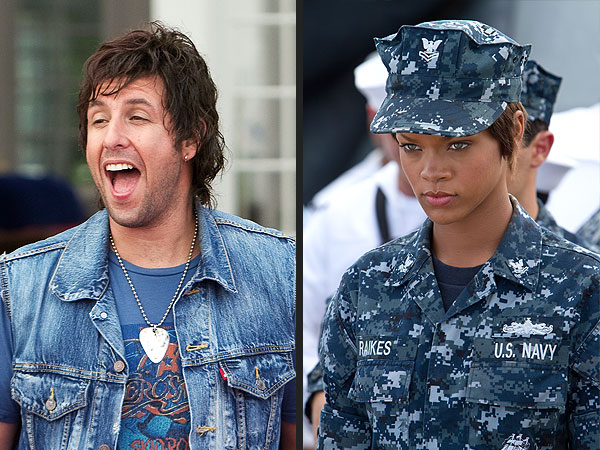BAMAKO, Mali (Reuters) - The European Union should complement a mission to train Mali's army, routed by rebels last year, by providing equipment from uniforms to vehicles and communications technology, a French general said on Wednesday.
General Francois Lecointre, appointed to head the EU training mission to Mali (EUTM) that was formally launched this week, said in Bamako equipping the "very impoverished" and disorganized Malian army was as important as training it.
Europe, along with the United States, has backed the French-led military intervention in Mali which since January 11 has driven al Qaeda-allied Islamist insurgents out of the main northern towns into remote mountains near Algeria's border.
European governments have ruled out sending combat troops to join French and African soldiers pursuing the Islamist rebels.
But the EU is providing a 500-strong multinational training force that will give military instruction to Malian soldiers for an initial period of 15 months at an estimated cost of 12.3 million euros ($16.45 million).
While hailing what he called the EU's "courageous, novel, historic" decision to support Mali, Lecointre told a news conference the Malian army's lack of equipment was a problem.
"I know the Malian state is poor, but the Malian army is more than poor," the French general told a news conference, adding that it urgently needed everything from uniforms and weapons to vehicles and communications equipment.
Last year, when Tuareg separatist forces swelled by weapons and fighters from the Libyan conflict swept out of the northern deserts, a demoralized and poorly-led Malian army collapsed and fled before them, abandoning arms and vehicles.
Mali's military was further shaken by a March 22 coup by junior officers who toppled President Amadou Toumani Toure, sowing division among rival army factions. Islamist radicals allied to al Qaeda later hijacked the victorious Tuareg rebellion to occupy the northern half of the country.
In a fast-charging military campaign led by Paris, French and African troops have driven the jihadists out of principal northern towns like Gao and Timbuktu, and are fighting the rebels in the Adrar des Ifoghas mountains.
HUMAN RIGHTS INSTRUCTION
Flanked by Mali's armed forces chief, General Ibrahima Dembele, Lecointre said he was disappointed that a meeting of international donors last month pledged funds for an African military force, known as AFISMA, being deployed in Mali, but included "very few" contributions for the Malian army itself.
"The European Union needs to invest today in the equipping of the Malian army and not just in its training," the general said, adding he would make this point strongly in a report to EU member state representatives early next month.
Asked how much re-equipping the army would cost, he said it would be "much more" than the 12 million euros of EU financing for the training mission, but could not give a precise estimate.
Starting early in April, the EU mission will start instructing Malian soldiers with a plan to train four new battalions of 600-700 members each, formed from existing enlisted men and new recruits.
Lecointre said the EU training would include instruction in human rights. Demands for this increased after allegations by Malian civilians and international human rights groups that Malian soldiers were executing Tuaregs and Arabs accused of collaborating with Islamist rebels.
The European training contingent is drawn from a range of European countries, but the main contributors would be France, Germany, Italy, Spain and Britain, EUTM officers said.
Mali's army has received foreign training before - several battalions that fled before the rebels last year were trained by the U.S. military and the leader of the March 22 coup, Captain Amadou Sanogo, attended training courses in the United States.
Dembele said U.S. training failed to forge cohesion among Malian units and he hoped the EU training would achieve this.
The United States, which halted direct support for the Malian military after last year's coup, could eventually resume aid if planned national elections in July fully restore democracy to the West African country.
Washington is providing airlift, refuelling and intelligence support to the French-led military intervention in Mali. ($1 = 0.7479 euros)
(Reporting by Pascal Fletcher; Editing by Jason Webb)











